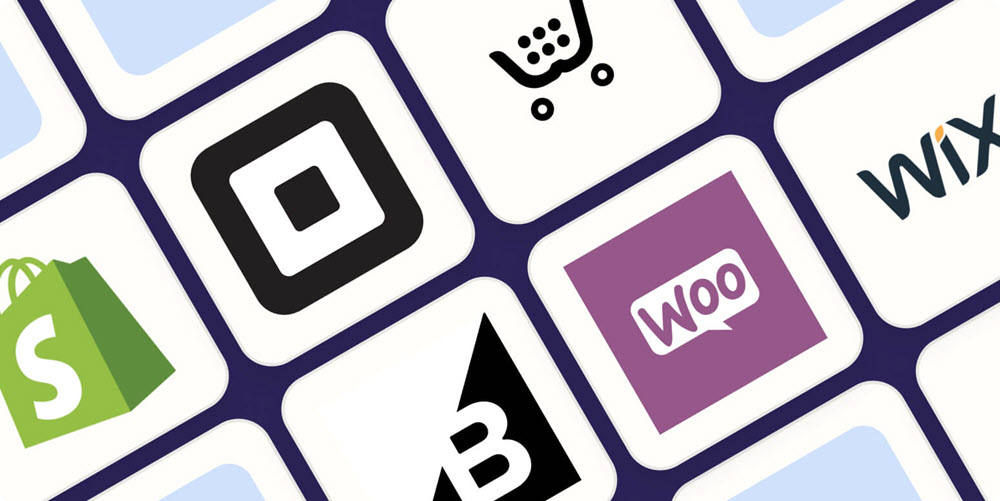Do you have a new e-commerce store idea but don’t know where to begin? This article tackles the e-commerce enablement process.
To enable e-commerce on your site, you will need to consider e-commerce platforms, payment gateways, social media, shipping options, and other tools to successfully run your e-commerce store.
Let’s dive in deeper.
Table of Contents
- What is e-commerce enablement?
- E-commerce enablement strategies
- Benefits of e-commerce enablement
- Software and Tools that enable e-commerce operations
- Work with NextSmartShip: E-commerce logistics specialist.

What is e-commerce enablement?
E-commerce enablement refers to using software and tools to operate an online store. When a customer places an order on your website, they expect to browse through items, place them into a cart, securely pay for them, and receive the physical product in their homes.
The process that facilitates online shopping is called e-commerce enablement. It involves setting up a working shopping cart, security features, and integrations. Any business owner looking to start up an e-commerce business has to effectively manage their e-commerce enablement strategy.
E-commerce enablement strategies
To understand e-commerce enablement further, let’s take a look at the different strategies that businesses can use to enable e-commerce and improve their online sales.
1. Design a user-friendly website.
One of the most important aspects of e-commerce enablement is the design and layout of your e-commerce store. A good online store is well-designed with minimal clutter and clean layouts so customers can easily view products.
A user-friendly website also means that the navigation is smooth and the loading times are fast when browsing. A search bar is essential for finding items easily.
Additionally, make sure your website is optimized for mobile devices by using responsive design techniques that adjust the layout and content to fit different screen sizes. Most people today use mobile phones, so it is advisable to have a really good mobile site.
2. Offer tight security during payment.
Undoubtedly, online shopping is made possible by online financial transactions such as credit cards, debit cards, and Paypal, among others. It is essential to ensure that you provide secure payment gateways to instill trust in your customers.
Financial scams are rampant online today. One of the ways to beat them is to install an SSL certificate on your online e-commerce website. An SSL or Secure Sockets Layer ensures an encrypted connection between users and your store.
Security is also important for business owners. When customers pay you, a secure payment gateway ensures that you will receive the funds in your account safely.
3. Provide excellent customer support.
When it comes to online shopping, there are bound to be queries of all sorts from customers. With features such as live chat, email, phone, and meeting booking tools, customers can easily contact online stores at any time.
By providing good customer support, you establish trust and credibility among your customers. This increases the likelihood of repeat customers.
4. Offer multiple shipping options.
Customers have different preferences when it comes to how they want their packages delivered to them after shopping online. Some customers would prefer to have their packages delivered to their door, while others would prefer to pick them up from another location.
Offering multiple shipping options improves the shopping experience for customers and increases sales.
A customer may add products to a cart, but if they reach the shipping options page and it is not conducive to them, they might abandon their cart.
That is why it is important to cater to a wide range of preferences when it comes to shipping options. Shipping options can also include express or standard shipping, depending on how soon the customer needs their purchase.
5. Use data analytics to make informed decisions.
Collecting data can help your business to predict patterns in the future and create strategies to increase sales. For example, tracking what products customers are viewing and where they are coming from can help businesses identify what is driving customer engagement.
Similarly, tracking what pages customers frequent and which ones they click out of quickly can help you identify which pages require improvements in your website design.
6. Create a social media strategy.
Social media has a lot of benefits for online stores. It can help to increase brand awareness, drive sales, and provide prompt customer care. According to Statistica, over 4 billion people use social media platforms today. These are all potential customers.
Social media platforms offer businesses various channels to advertise their products to people based on demographics and behaviors. However, even without ads, social media is powerful for attracting customers.
Benefits of e-commerce enablement
We have looked at the different strategies online businesses can use to enable e-commerce in their online stores. Let’s take a look at the benefits of using these strategies.
-
- Increased reach: E-commerce enablement allows businesses to increase their reach from physical locations to selling goods and services online. Customers can place orders and receive their packages no matter their location.
- Increased efficiency: E-commerce enablement allows businesses to use software that accurately tracks and manages orders. This saves time and reduces costs.
- Improved competitiveness: E-commerce enablement offers small businesses the same level of efficiency and automation as big corporations.
Software and Tools that enable e-commerce operations
E-commerce enablement is a process that helps businesses sell their products and services online. We have already looked at the e-commerce enablement strategies that you can use to successfully run your online business.
Now, let’s take a look at the different software and tools that you can use to streamline operations, increase sales, and grow your business.

E-commerce platforms
Online stores typically install e-commerce platform software in their site structure to manage online sales. By using third-party software, a business does not have to create its own code from scratch.
These platforms come with a variety of tools designed to track sales, process payments, manage inventory, and handle shipping and fulfillment.
E-commerce platforms are used by small businesses, large enterprises, and individual entrepreneurs to sell their products and services to customers worldwide.
Here are some of the most popular e-commerce platforms for your website:
- Shopify: Shopify is an e-commerce platform that allows businesses to sell products online with the help of a streamlined dashboard.
- Woocommerce: Woocommerce is used to build and manage online stores on WordPress.
- Wix: Wix is a website builder with its own e-commerce platform. You can use Wix to create and host your online store all in one place.
Customer support software
Customer support is an important aspect of online shopping. Customer support provides customers with a platform to address inquiries, complaints, and other issues. Customer support software allows users to access a representative swiftly to answer their concerns.
This type of support increases trust among customers. It also increases loyalty and increases customer retention.
Payment Gateway
Payment gateways are third-party services that integrate with online stores to offer secure payment and processing. Payment gateways support a variety of payment options, including credit and debit cards, bank transfers, and digital wallets, to provide customers with flexibility and convenience.
Examples of popular payment gateways include PayPal, Stripe, and Square.
Order processing system
An order processing system is a software system that enables e-commerce businesses to manage and automate the process of receiving, processing, and fulfilling customer orders.
The order processing system typically integrates with the e-commerce platform, payment gateway, and shipping and fulfillment software to provide a comprehensive end-to-end solution for managing customer orders.
Shipping and fulfillment
Setting up a website to sell your products is the first step in your e-commerce store. But after that, you have to think about how to get the product to the customer. At this stage, it’s time to consider your shipping and fulfillment options.
It is essential to seek out a fulfillment service that has multiple warehouses around the world to ensure faster shipping times. The “Amazon effect” has made sure that most online customers expect their delivery time to be as swift as possible.
That is why working with a shipping and fulfillment partner is a good idea.

Work with NextSmartShip: E-commerce logistics specialist.
NextSmartShip is an e-commerce logistics specialist that deals in e-commerce enablement. If you have a new e-commerce store, NextSmartShip can offer a complete A to Z for your business. Sourcing products from wholesalers and delivering them to customers just got easier.
Order fulfillment
NextSmartShip’s order fulfillment service uses cutting-edge AI-powered technology to determine the best channels for getting a product from the manufacturer to the distribution center and shipping it to the customer.
The fully automated fulfillment process allows for accuracy in orders. You can as well monitor and manage inventory levels and fulfillment status all in one place with the order management system, which comes free to use with fulfillment services.
Integrations
NextSmartShip allows business owners to work together with their favorite e-commerce platform integrations. NextSmartShip supports Shopify, Wix, Woocommerce, Amazon, Etsy, and Walmart, among others.
Two-day minimum shipping
Using AI-powered route tracking means that your customers can get their orders within two days of ordering. Additionally, thanks to our wide range of fulfillment centers worldwide, customers in locations such as the USA and Canada can also benefit from faster shipping times.
Contact NextSmartShip today to learn how to integrate e-commerce enablement into your business.
